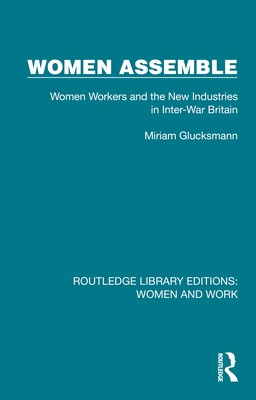
- We will send in 10–14 business days.
- Author: Miriam Glucksmann
- Publisher: Routledge
- ISBN-10: 1032285486
- ISBN-13: 9781032285481
- Format: 14 x 21.6 x 1.8 cm, softcover
- Language: English
- SAVE -10% with code: EXTRA
Reviews
Description
Why did working-class women become the central labour force on assembly lines in the new consumer goods' industries of the inter-war period? What was the long-term significance of this for the pattern of women's work, both in paid employment and in the home?
Originally published in 1990, Women Assemble fills a major gap in the history of women and work, and develops a theory of women's class relations, and of course gender and class more generally, by means of an original case-study. Taken from a wide variety of sources, it uses a multidisciplinary approach and is brought to life by interviews with people who worked in assembly-line industries during the inter-war period.
This extremely readable study is important to feminists, historians, and sociologists, as well as to all those concerned with issues of gender, class, and the labour process.
EXTRA 10 % discount with code: EXTRA
The promotion ends in 18d.06:53:43
The discount code is valid when purchasing from 10 €. Discounts do not stack.
- Author: Miriam Glucksmann
- Publisher: Routledge
- ISBN-10: 1032285486
- ISBN-13: 9781032285481
- Format: 14 x 21.6 x 1.8 cm, softcover
- Language: English English
Why did working-class women become the central labour force on assembly lines in the new consumer goods' industries of the inter-war period? What was the long-term significance of this for the pattern of women's work, both in paid employment and in the home?
Originally published in 1990, Women Assemble fills a major gap in the history of women and work, and develops a theory of women's class relations, and of course gender and class more generally, by means of an original case-study. Taken from a wide variety of sources, it uses a multidisciplinary approach and is brought to life by interviews with people who worked in assembly-line industries during the inter-war period.
This extremely readable study is important to feminists, historians, and sociologists, as well as to all those concerned with issues of gender, class, and the labour process.


Reviews